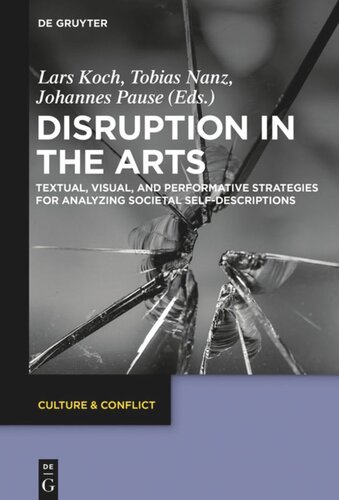

Most ebook files are in PDF format, so you can easily read them using various software such as Foxit Reader or directly on the Google Chrome browser.
Some ebook files are released by publishers in other formats such as .awz, .mobi, .epub, .fb2, etc. You may need to install specific software to read these formats on mobile/PC, such as Calibre.
Please read the tutorial at this link: https://ebookbell.com/faq
We offer FREE conversion to the popular formats you request; however, this may take some time. Therefore, right after payment, please email us, and we will try to provide the service as quickly as possible.
For some exceptional file formats or broken links (if any), please refrain from opening any disputes. Instead, email us first, and we will try to assist within a maximum of 6 hours.
EbookBell Team

4.7
36 reviewsSupported by the ERC
The volume examines from a comparative perspective the phenomenon of aesthetic disruption within the various arts in contemporary culture. It assumes that the political potential of contemporary art is not solely derived from presenting its audiences with openly political content, but rather from creating a space of perception and interaction using formal means: a space that makes hegemonic structures of action and communication observable, thus problematizing their self-evidence. The contributions conceptualize historical and contemporary politics of form in the media, which aim to be more than mere shock strategies, which are concerned not just with the ‘narcissistic’ exhibition of art as art, but also with the creation of a new common horizon of experience. They combine the analysis of paradigmatic works, procedures and actions with reference to theoretical debates in the fields of literature, media and art of the twentieth and twenty-first centuries. The essay-collection shows how textual, visual, auditive or performative strategies disclose their own ways of functioning, intervene in automated processes of reception and thus work on stimulating a sense of political possibilities.
The editors acknowledge support from the European Union’s Seventh Framework Program (FP 7/ 2007–2013), ERC grant agreement no. 312454.